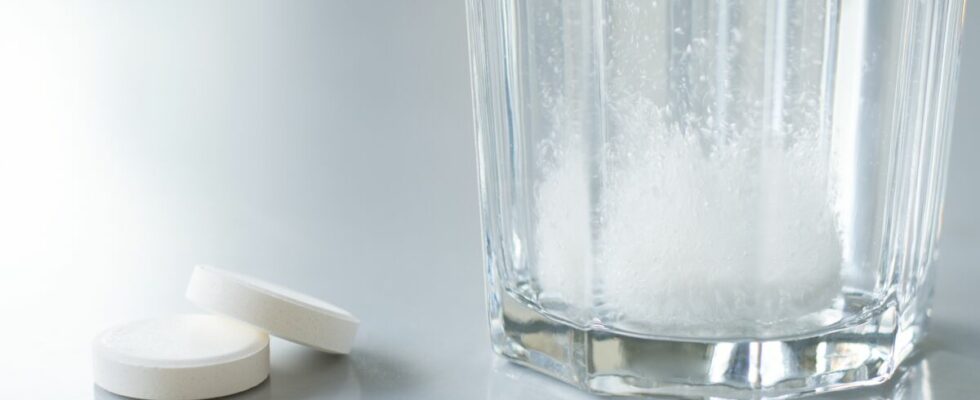Effervescent forms and tablets may have the same active ingredients, but their bioavailability may be different. While the tablet form is often more practical to use, the effervescent form acts more quickly, and is recommended for people who have problems swallowing tablets.
1. Why are there different dosage forms?
There are many forms of medication. The form that a medicine takes is called the galenic. Medications can thus be in the form of tablets, syrups, effervescent tablets, drops, capsules, liquids, but also suppositories for example. Medications can thus be administered orally, rectally, or subcutaneously, venously or locally. The method of administration of a medication is very important: it must be adapted not only to the pathology being treated, but also to the particularities of the patient. Regarding ingested medications, the form of medications plays an important role in the absorption of these molecules, and therefore in their bioavailability. Bioavailability represents the quantity of active substance that reaches the bloodstream.
According to the MSD Manual, many parameters can affect the bioavailability of a drug. Thus, the medication will be more or less effective depending on:
- the composition of its excipients (non-active principles);
- its physicochemical properties;
- the way it was preserved;
- taking other medications together;
- but also depending on the biological characteristics of the patient: pH of the stomach, emptying time of the stomach, presence of anatomical specificities or presence of intestinal pathologies, etc.
2. Compressed or effervescent form: what difference does it make?
Medications are often presented in tablet form, but they can also come in effervescent form. Thus, for many oral medications, there is a “solid” form represented by tablets (or sometimes capsules), and an effervescent form. These two forms have an equivalent dosage of active ingredient. In the tablet form, the active ingredient is represented by a compacted powder, which is coated or not. The tablet form should usually be ingested with a little water. The effervescent form corresponds to a pebble of powder to dissolve in a glass of water before ingesting it. The tablet form, once swallowed, must dissolve in the stomach so that the active ingredient can be released, which may take a few minutes. The effervescent form allows you to skip the dissolution stage: thus, the effervescent form takes less time to act. The active ingredient will pass the gastrointestinal barrier more quickly to find itself in the blood circulation and act. Another advantage of the effervescent form is that the contact time of the active product with the gastrointestinal barrier is reduced, which reduces the risk of irritation.
According to Geneva University Hospitals, the disintegration time of a compressed form is less than 60 minutes. The disintegration time of the effervescent form is estimated at less than 5 minutes. The effervescent form is therefore quicker to disintegrate, and therefore to act; but it requires very strict storage conditions away from humidity, and it must be taken with a glass of water. The compressed form is more easily stored, and it can be used without a glass of water, but only with a little water. It should also be noted that the effervescent form should not be split in two.
3. Compressed or effervescent form: which is the most effective form?
Generally, compressed or effervescent forms are equally effective. If the effervescent form is faster to act, the concentration of active substance is the same. These two forms are therefore as interesting as each other in terms of efficiency. However, in certain patients, the effervescent form may be preferred, or on the contrary avoided. The effervescent form is initially intended for people who have difficulty swallowing tablets, such as children or the elderly, for example. But the effervescent form contains salt in significant quantities. In its press release on the administration of the various oral forms, the Hôpitaux de l’est Lémanique pharmacy warns about the quantity of salt that a tablet can contain, taking the example of Dafalgan 1 gram taken 4 times a day and which represents 2,270 mg of salt. Taking effervescent tablets is therefore not recommended for people following a salt-free diet, or for people suffering from high blood pressure.
Sources
- The MSD Manual, Drug Absorption
- Pharmacy of the University Hospitals of Geneva, CAPP-INFO, Special dosage forms
- Pharmacy of Eastern Lake Geneva hospitals, Administration of various oral forms
Read also :
⋙ Effervescent, lyoc, suppository… What form should you choose so that a medication acts quickly?
⋙ Paracetamol: precautions to take with this analgesic medication
⋙ Medications: here is the position in which they should be taken for them to be most effective, according to science
